[Special Talk]
Before introducing systems such as SFA and CRM, it is important to visualize the current situation
“The gap between the predicted figures and the actual figures was visualized using BPMN, and I am glad we did it!”
KENBUNDO inc.
Requests
After selling various systems for seven years, I felt that we were only delivering systems to customers from the perspective of a systems integrator.
Solution
Using BPMN to visualize operations before and after the introduction of Salesforce (≒ The necessity of introducing a system and visualization of predicted effects.)
Service Used
BPRescue
Effects of Introduction
I was able to realize once again the importance of using BPMN to understand the current situation. I thought that by using BPMN before providing a system to a customer, we would be able to deliver a better system.
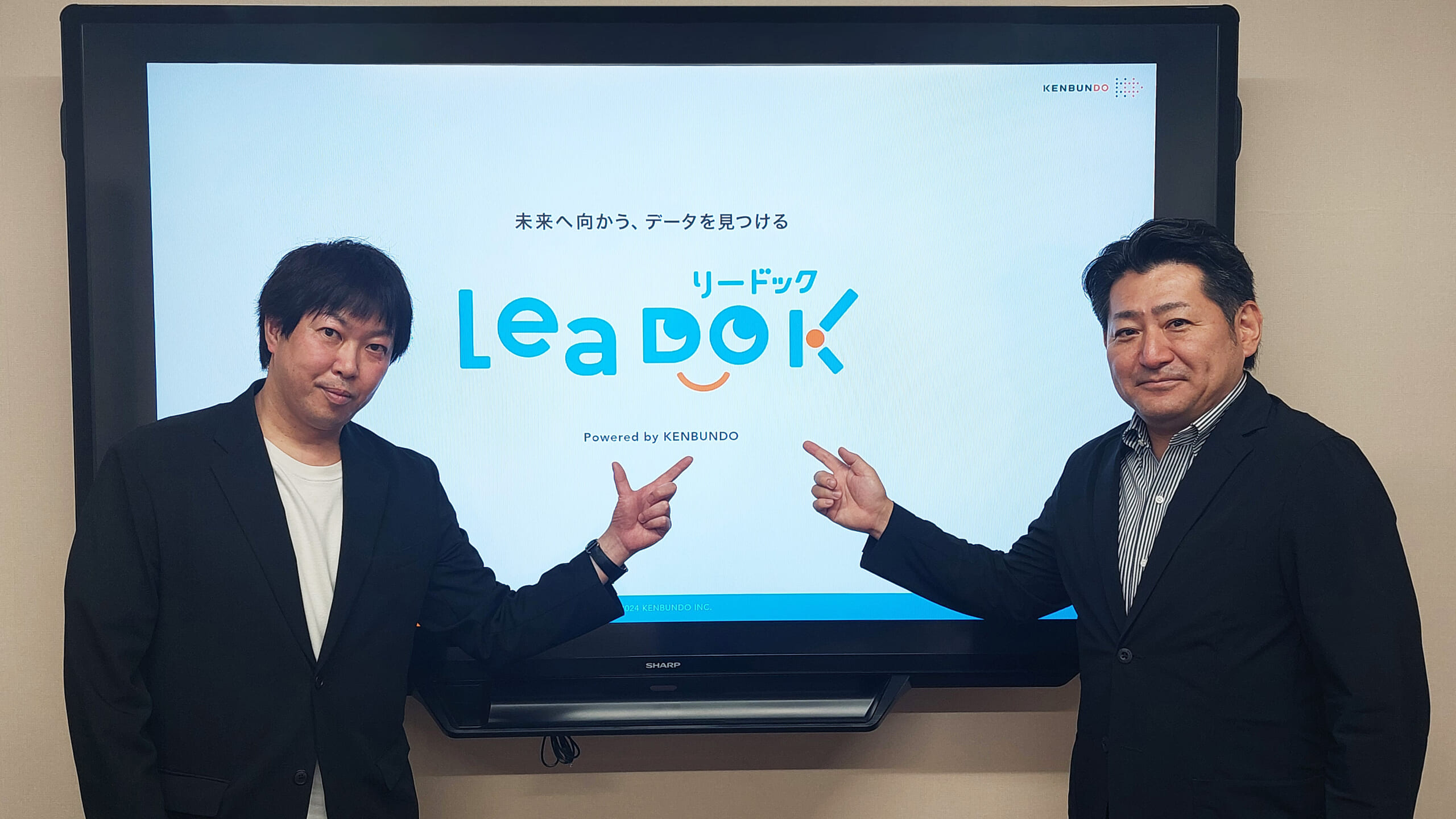

“What is important before introducing systems such as SFA and CRM is to visualize the current situation using BPMN.”
“I thought that we were only delivering systems to our customers from the perspective of a systems integrator.”
KENBUNDO inc. is one of the few ‘Salesforce partner companies’ in Kagoshima Prefecture.
President Hamada proposed our BPMN as a solution to the issues he had been feeling on a daily basis.
The background to the implementation of this measure, the results, and future prospects were discussed by President Hamada and our representative, Mr. Sasaki, as the two company presidents shared their passion for the project.

KENBUNDO’s ICT consulting service, “leadok
(left) Our representative, Mr. Sasaki (right) KENBUNDO President, Mr. Hamada)
―“What is important before introducing systems such as SFA and CRM?”―
―What do you think is important before introducing systems such as SFA and CRM?
KENBUNDO_President Hamada(hereafter, Hamada)
I think that the most important thing is to “find the place with the best cost-effectiveness”.
Many customers themselves also say that they “don’t know how to proceed with DX”.
There is a lack of information to understand the current situation. For this reason, I think it is important to start by visualizing the current situation using BPMN.
Our company representative_Sasaki (hereafter, Sasaki)
Even when we tell customers at the beginning of a proposal that “business flow is important”, they often think “do we need to pay to write business flow?” or “is there a cost-benefit?
However, as President Hamada said, if they want to introduce SFA or CRM within their company, they first need to understand the current situation.
So, I’m really happy that people in the SIer and IT consulting fields have realized that “BPMN for understanding the current situation before introduction is really important.”
―Background to the promotion of BPM―
―Why did you decide to visualize your company’s activities using BPMN?
Hamada
About seven years ago, while selling various systems, I felt that “we were only delivering systems to customers from the perspective of a systems integrator”.
If there are ten companies, then the issues will be different for each of the ten companies, and there will be different business flows for each of the ten companies.
If you don’t do a business flow interview to understand the current situation, the system will be meaningless.
It was in this kind of situation, with the recognition that “it is important to do a thorough business flow interview with the customer”, that I met President Sasaki.
To be honest, it was also a matter of timing and intuition (lol).
I had a gut feeling that “this would be something we would have to go through in doing business”.
Mr. Sasaki
When I first spoke with President Hamada, I could see his objectives and how he planned to use the system, so I felt that I really wanted him to use it.
Our service is focused on “services that become the starting point for business”, so we can visualize business and talk about how to proceed in a certain way.
However, we are not a software or hardware company, so we feel that we lack the ability to lead in terms of the next steps, such as deciding which tools or systems to use.
We have a hunch that in the future, more and more KENBUNDO customers will be using our services.
Hamada
I also think that in the process of creating BPMN, there are points where you can notice the inefficiencies, waste, and unevenness of the business flow from each perspective.
When you write BPMN, you can see things outside of the system, such as “Maybe we should allocate more people here”.
Sasaki
You’re right.
There are often cases where the most important things, such as the cost-effectiveness of the system and the figures up to the target, become unclear.
This ambiguity can be covered up by introducing a system, and it can make it seem like things are somehow better than they were before.
In the course of working with various companies, I’ve heard things like “We introduced a huge package three years ago, but now we’re having to start over again” and “We want to start by understanding the current situation in order to rebuild”
Hamada
It’s a waste. Not only the cost of the system, but if you calculate the cost of the number of people working on it, you’re losing a lot of money.
Sasaki
That’s right.
I think this accumulation of things is connected to the fact that Japan as a whole is lagging behind in DX. In the last couple of years, even companies that used to say “We don’t need business flow” have come to say “We do want it after all”.
Hamada
Writing BPMN is really important because it makes you realize things like “Let’s have the AI do this work instead of humans”.
There are definitely things that only humans can do, so we should preserve those, and I think it’s not the right approach to force the AI to do everything.
Sasaki
Yes. It’s the kind of warmth and chemistry that only humans can provide.
Japanese people often talk about “Omotenashi” (hospitality) and inbound tourism, but I think that AI probably can’t quite keep up with that.
We’re also working on AI… Oh, I skipped the next question (lol).
Hamada
(lol)
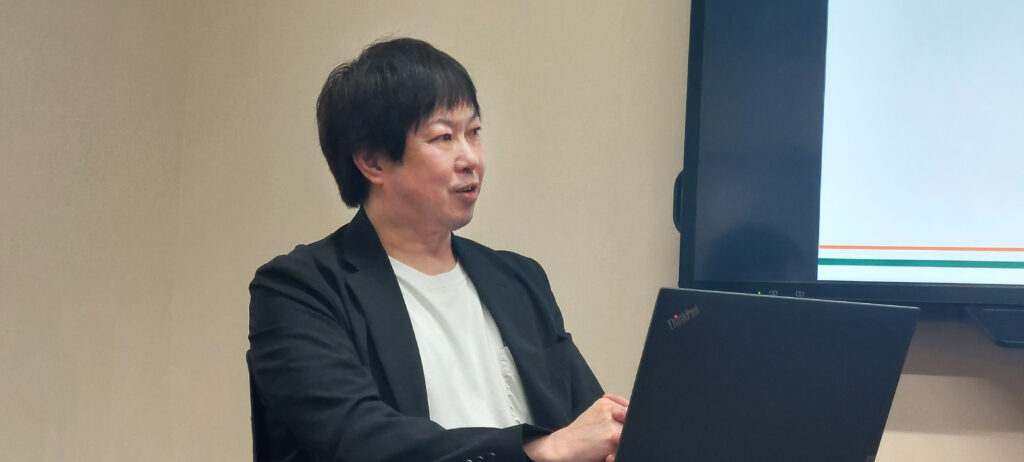

―The deciding factor in choosing Dueepion―
―Is there a particular reason why you chose our company from among the many consulting firms and BPMN creation tools available?
Hamada
The biggest reason was timing, but that might make people who are reading this think “What is that?
” (laughs) If I had to pick one reason, it would be that the numerical and visual results showed us where we were doing well with our current processes and where we could make a profit by making changes.
Also, it was my impression that it was “cheap”.
If it is possible to identify the work at this cost, it is completely worth it.
The cost-effectiveness was also a deciding factor.
Sasaki
Thank you.
We can look at what kind of work is costing money in the customert’s business, like a matrix, with vertical and horizontal totals, but we pay particular attention to “which work is linked to that”.
Rather than focusing on individual points, we need to consider what should be prioritized, such as “work that affects the whole” and “work that has an impact but does not affect the whole”.
I think that BPMN can help us to find the correct answers for both addition (e.g. introducing a system) and subtraction (e.g. omitting work that is not related to the system).
Hamada
That’s right.
There are always going to be tasks that don’t need to be labored over, so it’s necessary to change those resources to something else.
If we’re going to change things, we need to transform ourselves too.
Sasaki
When I first exchanged business cards with KENBUNDO, I noticed that you had the Salesforce Certified Administrator qualification, and I felt that KENBUNDO was a model case of so-called internal DX.
There are various factors that are linked to the way you decide on business priorities, and when I spoke with the employees, I thought, “They’re really changing things.”
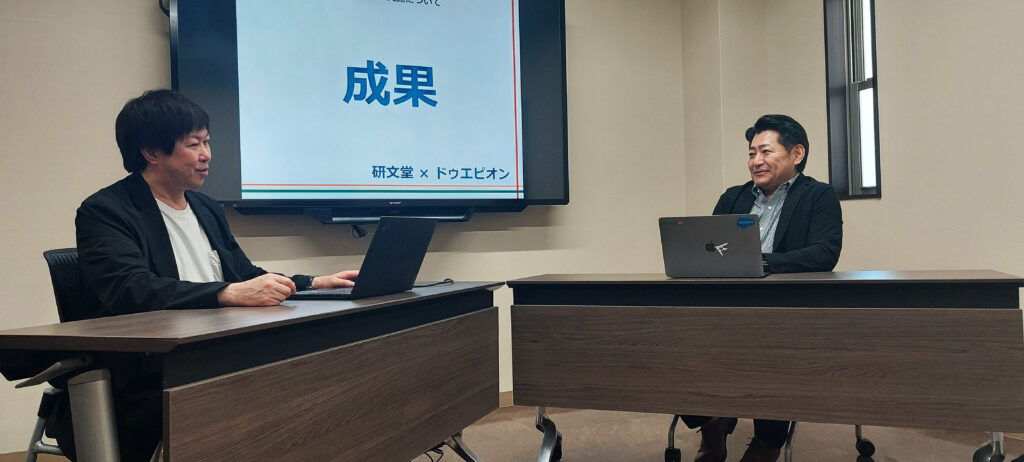
At times, they would look serious, and at other times, they would laugh… The conversation progressed in a relaxed atmosphere.
―Results of the measures―
―This time, we created “BPMN before and after the introduction of Salesforce” regarding the internal DX of KENBUNDO. How has it been used since then, and what have been the results?
Hamada
With ASIS BPMN, I was surprised that I could instantly see from the flow that “we were doing so much double and triple entry for the same tasks”.
For us, there was a part of our thinking that said, “We should change this part of the work process..
However, we were only thinking that “It might be better if we changed it”, and we didn’t have any figures to show how much it would improve or how much it would reduce costs.
The “discrepancy between the predicted figures and the actual figures” was visualized using BPMN, and we were glad that we had done it.
To be honest, it took us five years to get to the point where we were able to fully utilize the Salesforce system, but productivity has increased and profitability has improved significantly.
We have been able to allocate the extra man-hours to our SI work, and we are now able to manage “increasing productivity through operations without reducing customer satisfaction”.
Sasaki
I think that what correlates with sales is how you allocate human resources.
I had a very strong desire to create a business model that did not rely on the operational capacity of employees, so being able to tie up with KENBUNDO this time was a big deal.
I feel that if BPMN becomes more widespread, including things like systemization and AI, it will raise the level of awareness that we should be reforming the structure of work through a flow, rather than just focusing on individual points.
If we don’t keep track of our current situation, the vision we want to achieve will become dimmer.
I feel that it is incredibly important to keep track of our current situation at some point before it’s too late.
Hamada
That’s right.
I think that if we keep systemizing things that are causing us problems and putting them on top of each other, we’ll end up with things like “Nobody’s using this”.
Including medium- to long-term goals for five or ten years from now, it is most important to be able to visualize milestones such as “what needs to be done by when”.

BPMN automatic creation service [BPM+ (BPM Plus)] *Japanese Patent pending
―Future vision and outlook―
―Finally, please tell us about the vision and outlook of both presidents regarding what you aim to achieve in the future.
Hamada
I want to work from the perspective of a partner, focusing on Kagoshima and our sales area, and using digital technology to “Work together” to improve operational efficiency and the working environment.
I think that as our customers grow, we can also grow, of course, so
I think of us as “a partner who accompanies the customer on their path to success”.
Sasaki
We want to incorporate all of our know-how and methodologies into our systems, and provide a service that allows customers to create their own workflows independently.
We are also thinking of creating a service that combines BPO and BPR, and that says “We will work together to achieve results!”.
―Company Introduction―
[KENBUNDO inc]
Starting out as a small stationery store in 1978, KENBUNDO inc. is now one of the few “Salesforce partner companies” in the prefecture.
We provide consulting services for systems that improve customer satisfaction by achieving sales support linked to customer management (visualization and efficiency of sales).
The company has deep roots in the local community, and its desire to “make the office more comfortable” and “be of service to everyone” has remained unchanged since its founding.
[Doepion Co., Ltd.]
Doepion Co., Ltd. was established in 2020 as a spin-off from Dofine Holdings Co., Ltd., which was engaged in call center operations.
It mainly provides BPR consulting and develops BPR support systems.
President Sasaki has experience in all areas of the business, from operations to planning, and was appointed as the company’s representative.
Drawing on his wide range of experience, he provides consulting services that are “tailored to the needs of practitioners” and “develops BPR support systems”.
-

NTT Finance様
[Special Interview]
80% reduction in inquiry-response tasks! Knowledge sharing for operational efficiency.
“The usability and ease of searching were the deciding factors.” -
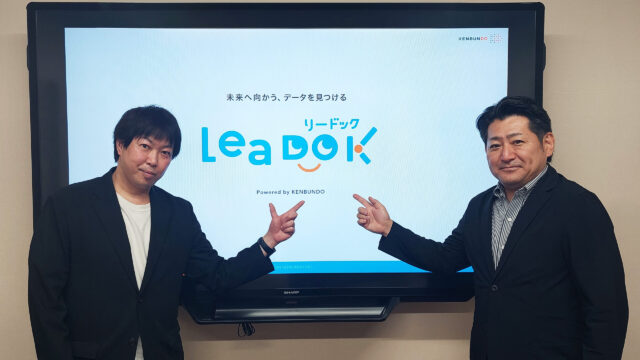

KENBUNDO inc.様
[Special Talk]
Before introducing systems such as SFA and CRM, it is important to visualize the current situation
“The gap between the predicted figures and the actual figures was visualized using BPMN, and I am glad we did it!” -
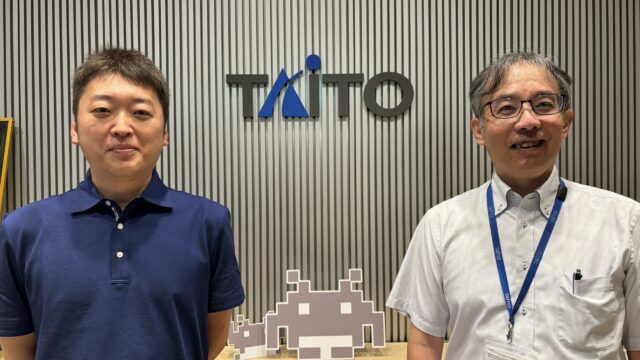
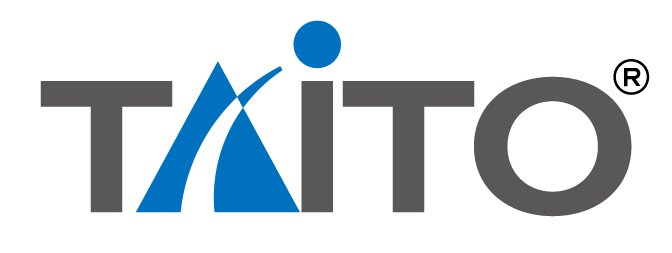
Taito Corporation様
“Doepion made flexible and prompt proposals”
“Doepion’s personnel are quick to catch up on matters they don’t know and are very helpful!”

